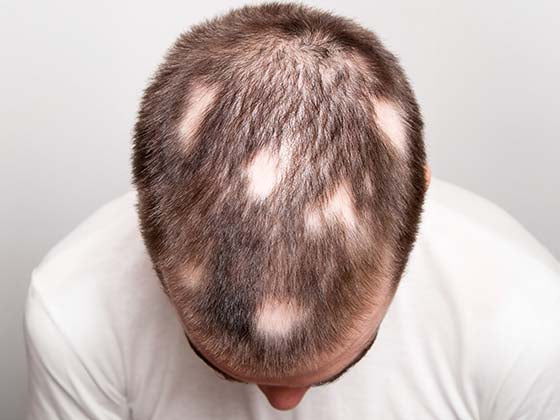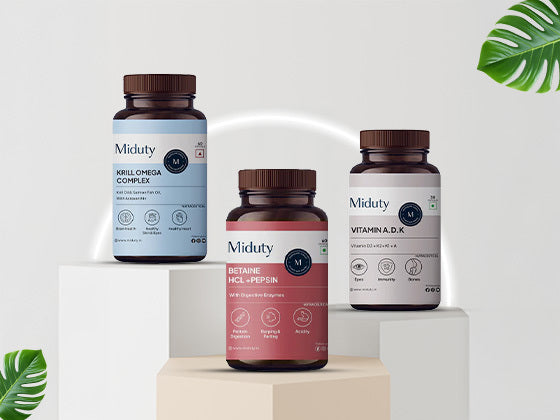Fine and thin hair are phrases that are frequently used interchangeably, yet they refer to different elements of hair structure. Understanding the differences between fine and thin hair will help you choose the correct products and styling techniques to enhance the natural beauty of your hair. This blog will look at the differences between fine and thin hair.
Understanding Fine and Thin Hair

The terms fine and thin hair are frequently used to describe the texture and density of hair. While they may appear to be synonymous, they refer to different aspects of hair characteristics.
Fine Hair:
-
Texture: The diameter or thickness of individual hair strands is referred to as fine hair. Fine hair has a smaller circumference than coarse or thick hair.
-
Volume: Because it is so lightweight, it may appear flat or devoid of volume.
-
Oiliness: Because fine hair has less surface area on which natural oils can spread, it can become oily more quickly. In comparison to thicker hair types, it might seem greasy sooner.
-
Styling Difficulties: Fine hair can be difficult to style because it lacks volume and thickness, making certain styles difficult to maintain.
Thin Hair:
-
Density: The density of the hair follicles on your scalp is referred to as thin hair. It means that your head has fewer hairs per square inch.
-
Scalp Visibility: Thin hair can highlight the scalp, especially when pulled back or styled in certain ways.
-
Lack of Fullness: Even if each strand is fine or thick, thin hair can appear sparse and lacking in fullness.
Understanding your hair's specific characteristics—whether fine, thin, or both—can assist you in selecting the right products and styling techniques to enhance its natural beauty and manage its unique challenges. Consultation with a hairstylist who has experience with fine or thin hair can also provide tailored advice.
Defining Fine Hair: Characteristics and Care
The thickness or diameter of individual hair strands is referred to as fine hair. It differs from coarse or thick hair in that the hair shafts are smaller. Understanding the characteristics of fine hair and how to care for it will aid in maintaining its health and appearance. The circumference of fine hair strands is smaller than that of other varieties of hair. Thin hair is more vulnerable to breaking. Fine hair frequently lacks natural volume and appears flat or lifeless, particularly at the roots. Fine hair tends to turn greasy sooner due to the smaller surface area, as natural oils from the scalp distribute more swiftly down the strands. Fine hair is more prone to tangling and knotting, especially when exposed to wind or contact. Use the proper products, condition carefully, prevent overwashing, be patient with styling, brushing techniques, frequent trims, avoid tight hairstyles, protect from sun and environmental damage, and take care of your scalp. You can help maintain the health, natural volume, and shine of fine hair by understanding its unique characteristics and adopting a gentle and tailored hair care routine. Experimenting with different products and techniques will assist you in determining what works best for your hair type. If necessary, a professional hairstylist can provide tailored advice for managing fine hair.
Recognising Thin Hair: Causes and Management
Causes of Thin Hair:
-
Genetics: Genetics and family history are significant determinants. People who have thin hair may inherit the features and density of their parent's hair.
-
Aging: A person's hair may naturally thin as they age due to hormone fluctuations, a decrease in hair follicle activity, and a decrease in hair thickness.
-
Medical Conditions: Numerous illnesses or medical procedures, including thyroid issues, autoimmune diseases, hormonal imbalances, chemotherapy, and autoimmune conditions, can result in thinning hair.
-
Stress: Prolonged stress can cause thinning or shedding of hair and damage to its health.
-
Bad Diet: An inadequate diet or a lack of essential vitamins and minerals, like biotin or iron, can affect hair density and growth.
Management and Care for Thin Hair:
-
Gentle Handling: Treat thin hair delicately to avoid breakage. Use a wide-tooth comb or a brush designed for gentle detangling to prevent further damage.
-
Appropriate Hairstyles: Choose hairstyles that add volume and give the appearance of fuller hair, such as layered cuts, shorter styles, or texture.
-
Volumizing Shampoos, Conditioners, Mousses, and Styling Products: Use volumizing shampoos, conditioners, mousses, and styling products to add body and fullness to thin hair without weighing it down.
-
Avoid Overstyling: Use heat-styling tools, chemical treatments, and tight hairstyles sparingly, as these can cause damage and breakage.
-
Scalp Care: Keep your scalp healthy by using gentle shampoos and keeping it clean. Scalp massages can increase blood flow, which promotes healthier hair growth.
-
Nutritious Diet: To promote the general health of your hair, eat a balanced diet full of important vitamins, minerals, and proteins.
-
Speak with a Professional: To ascertain the underlying causes and possible treatments for thinning that is concerning or that continues, consult a dermatologist or other healthcare provider.
-
Medical Treatments: Depending on the underlying cause of thinning hair, a doctor may prescribe medication, topical treatments, or procedures like PRP (Platelet-Rich Plasma) therapy or hair transplants.
Understanding the underlying causes of thin hair and using a holistic approach to care will aid in the management of thinning and encourage healthier hair development. To support general hair health, it is critical to address any underlying health conditions and maintain a healthy lifestyle. For persistent thinning difficulties, it is best to consult a healthcare practitioner or dermatologist for personalised advice and treatment alternatives.
The Key Differences between Fine and Thin Hair
Fine and thin hair are frequently confused, but they refer to different aspects of hair. Understanding their key differences can aid in determining appropriate care and styling methods:
Fine Hair:
-
Hair Strand Thickness: The diameter or thickness of individual hair strands is referred to as fine hair. It is distinguished by smaller or narrower strands than other hair types.
-
Texture: Fine hair can be silky in texture and lacks diameter and width. It has a smooth texture and is easily weighed down by heavy products.
-
Volume: Fine hair frequently lacks natural volume, appearing flat or lacking in body. Given its light weight, it might have trouble supporting some styles.
-
Oiliness: Because fine hair has a smaller surface area, natural oils tend to spread through the strands more quickly, making it greasy more quickly.
Thin Hair:
-
Hair Density: The quantity of hair follicles per square inch on the scalp is referred to as thin hair. It means that there are fewer hairs overall, giving the appearance of less density.
-
Visibility of the Scalp: When thin hair is styled a certain way or exposed to light, it can become more apparent.
-
Lack of Fullness: Regardless of the thickness of individual strands, thin hair can appear sparse and lack fullness or density. If the density of strands on the scalp is lower, even fine hair can appear thin.
-
Breakage and Fragility: Because there are fewer strands in thin hair, it is more likely to break and be more fragile. Therefore, it is important to handle thin hair carefully to avoid further damage.
Specialized Care for Fine and Thin Hair

To improve volume, manageability, and overall health, fine and thin hair requires specialised care. Tailoring your hair care routine to these unique traits can aid in the maintenance and improvement of fine and thin hair. Here are some tips for specialised care:
-
Gentle Cleansing: Choose volumizing or clarifying shampoos designed exclusively for fine or thin hair. Look for products that enhance volume without adding weight to the hair. Fine hair tends to become greasy more quickly, but over-washing can deplete natural oils, making it appear even thinner. Find a happy medium between keeping your hair clean and over-drying it.
-
Conditioning Techniques: To avoid weighting down the roots, apply conditioner largely to the ends of your hair. Use lightweight, volumizing conditioners, or only apply conditioner to the mid-lengths and ends of your hair. Conditioners that are thick and creamy can make fine hair appear limp. Choose milder solutions or use a leave-in conditioner on the ends.
-
Proper Styling: Use mousses, foams, or sprays that are formulated to impart volume to fine hair. Apply sparingly at the roots for lift to avoid product accumulation. To avoid damage, use heat styling tools sparingly and at lower temps. To decrease heat exposure, consider air-drying on occasion.
-
Haircuts and Styles: Layered hairstyles offer texture and the appearance of volume to fine and thin hair. Shorter haircuts can give the illusion of fuller hair. Consult with your stylist to discover a shorter style that complements your face shape and hair type.
-
Scalp Care and Nutrition: Use moderate washes and scalp massages regularly to improve blood flow and encourage healthier hair development. Ensure you're getting enough nourishment, including key vitamins, minerals, and proteins, as these all have a role in keeping your hair healthy.
-
Avoiding Damage: To detangle without causing damage, use a wide-tooth comb or a brush created specifically for sensitive hair. Pulling styles, such as tight ponytails or braids, can cause breakage and damage to fine and thin hair.
-
Professional Advice: Seek the assistance of a hairstylist who is familiar with dealing with fine or thin hair. They can propose products, cuts, and style procedures that are appropriate for your hair type.
You can manage fine and thin hair more successfully by using these specialised care tips, which can improve its natural volume and health while reducing damage and breakage. Experiment with various products and techniques to determine what works best for your hair, and don't be afraid to seek professional advice for personalised recommendations.
Optimal Haircare Techniques for Fine Hair
To keep fine hair healthy, volumized, and manageable without weighing it down, particular procedures and treatments are required. Using the correct products, washing and drying procedures, styling suggestions, haircut and styling techniques, brushing and detangling, scalp care and nutrition, and protective styles are some of the best hair care strategies for fine hair. Adopting these fine hair care procedures can help maintain the health, volume, and overall appearance of your hair. Experiment with different products and methods to see what works best for your hair type, and get personalised advice from a hairstylist.
Volumizing and Strengthening Strategies for Thin Hair
Volumizing and strengthening thin hair entails using a variety of treatments and products to enhance volume, thicken strands, and preserve overall hair health. Utilise volume-boosting products, strengthening and nourishing products, haircut and styling techniques, heat styling, scalp and hair care, avoid overprocessing, nutrition and lifestyle, protective styling, and consultation and professional advice. You can improve the volume, strength, and general health of your thin hair by applying these tactics and taking a holistic approach to hair care. Experiment with different procedures and products to see what works best for your hair type, and seek professional advice for personalised recommendations.
Best Hairstyles to Enhance Fine and Thin Hair
Hairstyles can help to improve the appearance of fine and thin hair by adding volume, texture, and the illusion of fuller-looking hair. Here are some ideas for flattering hairstyles:
-
Layered Bob: A layered bob hairstyle gives thin hair dimension and volume. Shorter layers at the crown area add lift and volume, while longer layers at the ends add dimension.
-
Pixie Cut: Short pixie cuts with layers can add volume and make hair look thicker. Textured layers create movement and body, especially around the crown.
-
Chin-Length Bob with Bangs: A chin-length bob with side-swept or wispy bangs gives the face more fullness and gives the impression that the hair is thicker.
-
Long Layers with Face-Framing: Long layers can create the appearance of thickness and volume by using face-framing strands. Layers give texture and movement, and face-framing elements give dimension.
-
Textured Lob (Long Bob): The hair gains volume and dimension from a lob with textured ends. This length is adaptable and can have different styling techniques to add volume.
-
Messy or Beachy Waves: Accept natural waves or make your own with a curling wand. Textured, tousled waves give fine and thin hair volume and dimension.
-
Pulled-Back Ponytail with Teased Crown: Pulling hair back into a ponytail and gently teasing the crown before securing the ponytail can give the appearance of extra volume at the crown.
-
Half-Up Half-Down Hairstyle: Half-up hairstyles, particularly those with twists or braids, can add texture and volume while keeping hair partly styled and partly down.
-
Side-Swept Hairstyles: Side-swept hairstyles, whether a bob on the side or bangs on the side, create an asymmetrical look that adds volume and visual interest.
To find the best haircut and styling options that complement your hair texture, face shape, and personal style, always consult with a hairstylist who has experience working with fine and thin hair. Experimenting with various styles and techniques can assist in determining what works best for enhancing the appearance of fine and thin hair.
Maintaining Health and Vitality in Fine and Thin Hair

Maintaining healthy and vibrant fine and thin hair requires specialised care. Here are some essential tips for maintaining its health and vitality:
-
Gentle Cleansing: Select shampoos and conditioners that are gentle, volumizing, and sulfate-free for fine and thin hair. Avoid heavy, creamy formulas that can cause hair to become weighed down. Cleanse the scalp thoroughly to remove oil and product buildup without stripping essential oils.
-
Conditioning Techniques: To avoid weighing down the roots, apply conditioner primarily to the mid-lengths and ends. Make use of lightweight, volumizing conditioners or leave-in conditioners.
-
Proper Washing Habits: Find the right balance of washing frequency. Fine hair may become oily more quickly, but over-washing can strip natural oils and make it look limp.
-
Styling and Handling: Limit your use of heat-styling tools and harsh chemicals. When styling tools, use low heat settings and protective products to avoid damage. To avoid breakage, detangle hair gently with wide-tooth combs or brushes designed specifically for fine and thin hair.
-
Haircuts and Styles: Layered hairstyles can add volume and texture to your hair. Layers placed correctly can give the appearance of thicker hair.
-
Scalp and Hair Health: Scalp massages stimulate blood circulation and promote healthier hair growth by gently massaging the scalp. Maintain a well-rounded diet rich in vitamins, proteins, and minerals to promote overall hair health.
-
Protective Measures: Avoid hairstyles that pull or strain the hair, which can cause breakage and damage. Shield hair from environmental stresses such as harsh weather, excessive sun exposure, and pollutants that can damage delicate strands.
-
Professional Guidance: Seek advice from a stylist who has experience with fine and thin hair. They can recommend products, styles, and care routines that are appropriate for your hair type.
You can help keep your fine and thin hair healthy, vibrant, and looking its best by applying these tactics and sticking to a consistent hair care routine. Experiment with different products and techniques to learn what works best for your particular hair type, and don't be afraid to seek professional counsel for personalised recommendations.
Nutritional Considerations for Hair Health
Maintaining healthy hair is largely dependent on diet, with a few nutrients being especially important for fostering hair growth, strength, and general well-being. The following are important food factors to take into account for healthy hair:
-
Protein: Protein is the most important component of hair. A diet high in protein-rich meals improves hair development and strengthens hair follicles. Include lean meats, chicken, fish, eggs, dairy products, legumes, nuts, seeds, and soy products in your diet.
-
Iron: Iron aids in the transfer of oxygen to hair follicles. An iron deficiency can result in hair shedding and thinning. Include iron-rich foods such as red meat, chicken, fish, beans, lentils, spinach, and fortified cereals in your diet.
-
Omega-3 Fatty Acids: These fatty acids promote scalp health, nourish hair follicles, and assist in the prevention of dry, brittle hair. Consume omega-3-rich foods, including fatty fish (salmon, mackerel), walnuts, flaxseeds, chia seeds, and avocados.
-
Vitamins: Vitamin A promotes sebum production, which moisturises the scalp and keeps hair healthy. Sources include sweet potatoes, carrots, spinach, kale, and dairy products. Vitamin C stimulates the creation of collagen, which is necessary for hair structure. Citrus fruits, strawberries, bell peppers, and broccoli are all high in vitamin C. Vitamin E guards against oxidative stress and supports scalp health. Good sources include nuts, seeds, spinach, and avocado. Vitamin D is required for the cycling and growth of hair follicles. Sunlight, fatty fish, fortified foods, and supplements, if necessary, are all good sources.
-
Biotin: Biotin is known to improve keratin infrastructure, promoting healthy hair growth. Eggs, nuts, seeds, salmon, sweet potatoes, and whole grains are all good sources.
-
Zinc: Zinc plays a role in hair tissue growth, repair, and hair follicle health. Shellfish, red meat, poultry, legumes, nuts, seeds, and whole grains are all good sources.
-
Water: The role of hydration in overall health, including hair health, is critical. It hydrates the hair from the inside out. Hydration can be obtained from plain water, fruits and vegetables, and herbal teas.
Lifestyle Considerations: Extreme calorie restriction or crash diets can cause nutrient shortages that harm hair health. Chronic stress can aggravate hair loss. Stress-relieving activities such as meditation, yoga, or physical activity can help.
Preventing Damage and Breakage in Fine Hair
To maintain the health and strength of fine hair and prevent damage and breakage, gentle care and proper handling are required. Here are some tips to help protect fine hair from damage and reduce breakage:
-
Use Mild Shampoos: To clean without unduly stripping natural oils from hair, opt for mild, sulfate-free shampoos made for fine hair. Apply conditioner primarily to the ends to avoid weighing down the roots. Use lightweight, volumizing conditioners or leave-in conditioners to add moisture.
-
Avoid Using Hot Water: To avoid drying out the strands, wash your hair with lukewarm or cool water.
-
Gentle Towel Drying: Instead of rubbing hair dry vigorously, pat it dry with a soft towel, as wet hair is more prone to breakage.
-
Limit Heat Styling: Use heat-styling tools as little as possible. If you must use them, use a heat protectant spray and the lowest heat setting possible.
-
Avoid Tight Hairstyles: Avoid tight ponytails, braids, or buns, which can cause tension and breakage, particularly near the hairline.
-
Wide-Tooth Combs or Brushes: To avoid breakage, detangle hair gently with wide-tooth combs or brushes designed for delicate hair.
-
Avoid Using Heavy Products: Avoid using heavy styling products or excessively using products that can weigh down fine hair.
-
Sun and Environmental Factors: Use hats or scarves when going outside to protect your hair from excessive sun exposure and environmental damage.
-
Use satin or silk pillowcases: These materials reduce friction and help prevent hair breakage while sleeping.
-
Regular Haircuts: Get regular trims to remove split ends and prevent further damage. This contributes to overall healthier hair.
-
Handle with Caution: Wet hair is more fragile, so be gentle when detangling or styling to avoid breakage.
-
Balanced Diet: Make sure your diet contains enough protein, vitamins, and minerals for healthy hair growth and strength.
-
Consult a Stylist: Seek advice from a stylist who has experience with fine hair for personalised products and styling recommendations.
By implementing these practises and being mindful of how you care for and handle fine hair, you can help prevent damage and minimise breakage, thereby maintaining its health and strength over time. Experiment with different strategies to see what works best for your hair type, and seek personalised advice from professionals when necessary.
Addressing Hair Thinning and Loss Concerns
Hair thinning and loss can be distressing, and dealing with them entails identifying probable reasons and taking necessary steps to control and promote hair health. Here are some steps to take to combat hair thinning and loss:
1. Identify Underlying Causes:
-
Hormonal Changes: Hormonal imbalances caused by pregnancy, childbirth, menopause, or thyroid disorders can aggravate hair loss.
-
Genetics: Family history can influence hair thinning or baldness (androgenetic alopecia).
-
Stress: Prolonged stress can trigger telogen effluvium, a disorder that results in hair shedding.
-
Nutritional Deficiencies: A deficiency in essential nutrients, such as iron, biotin, vitamins D and E, or protein, can have an impact on the health of your hair.
-
Medical Conditions: Hair loss may result from alopecia areata, infections on the scalp, or other underlying health problems.
2. Maintain a Healthy Lifestyle:
-
Balanced Diet: To support hair health, eat a nutritious diet high in protein, iron, vitamins, and minerals.
-
Hydration: Keep your body and hair hydrated by drinking plenty of water.
-
Manage Stress: Reduce stress by engaging in stress-relieving activities such as meditation, yoga, or hobbies.
3. Hair Care Practices:
-
Gentle Handling: To avoid breakage, be gentle when washing, brushing, and styling your hair, especially when it is wet.
-
Avoid Tight Hairstyles: Avoid hairstyles that pull on the hair, which puts less strain on the follicles.
4. Professional Assistance:
-
Consult a Dermatologist or Trichologist: If you have severe or persistent hair loss, consult a dermatologist or a trichologist for proper diagnosis and treatment options.
-
Medications or Treatments: Depending on the cause of your hair loss, your healthcare provider may recommend medications, topical treatments, or procedures such as PRP (Platelet-Rich Plasma) therapy.
5. Haircare Products:
-
Use Mild Products: To keep your scalp healthy, use mild shampoos and conditioners that are appropriate for your hair type.
-
Avoid Overprocessing: Avoid using harsh chemicals, excessive heat styling, or tight hairstyles that can cause hair damage.
6. Hair Supplements:
-
Consider Supplements: Supplements containing biotin, vitamins, and minerals may aid in hair growth; however, before beginning any new supplements, consult a healthcare professional.
7. Acceptance and Styling:
-
Accept Hairstyling Options: Experiment with different hairstyles or consider shorter styles that can create the illusion of volume and thickness.
-
Wigs or Hairpieces: If desired, explore options like wigs or hairpieces to enhance your appearance while addressing hair loss concerns.
Understanding the potential causes and taking a holistic approach that includes lifestyle changes, proper hair care, seeking professional advice, and investigating appropriate treatment options can help manage hair thinning and loss concerns. Consultation with a healthcare professional or a dermatologist is recommended for personalised advice and treatment plans tailored to your specific situation.
Adapting to Changes in Hair Texture Over Time

Changes in hair texture are frequent as people age due to a variety of reasons, such as hormonal fluctuations, heredity, lifestyle, and overall health. Adapting to variations in hair structure over time entails making changes to your hair care routine and style techniques. Adjusting your hair care regimen, hydration and nutrition, heat styling and treatments, adapting styling techniques, regular hair maintenance, expert assistance, patience and acceptance, and scalp care are all ways to adapt to changes in hair texture. Accept the changes, try new styles, and prioritise delicate care to maintain the health and beauty of your changing hair. Getting personalised counseling from a hairstylist or trichologist might help you manage changes in hair texture as you age.
Understanding Age-Related Changes in Hair
Hair changes can occur as people age owing to a mix of genetic, hormonal, and environmental causes. Understanding age-related hair changes, such as greying, thinning, and reduced density; changes in texture; reduced hair growth; dryness and brittle hair; scalp changes; breakage and fragility; reduced pigment production; and hair thinning and balding, can help manage and adapt to these transformations. Understanding these age-related changes in hair can help people adapt their hair care practices and enjoy their hair's natural evolution. To properly manage and adapt to these changes, it is critical to maintaining general health, practise appropriate hair care habits, and seek professional help when necessary.
Advanced Treatments for Evolving Hair Types
Innovative procedures and technology focused on treating specific concerns relating to changing hair textures, thinning, or other challenges are frequently used in advanced treatments for evolving hair types. Platelet-rich plasma (PRP) therapy, laser therapy, hair transplantation, scalp micropigmentation (SMP), nanotechnology in hair products, customised hair care formulations, stem cell therapy, and prescription drugs are among the modern therapies that cater to changing hair types. When considering advanced therapies for changing hair types, it's critical to contact a skilled practitioner, such as a dermatologist or trichologist, to select the best therapy based on individual needs, hair condition, and expectations. For best results, these treatments frequently necessitate expert evaluation and direction.









































